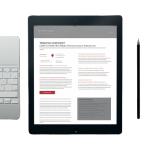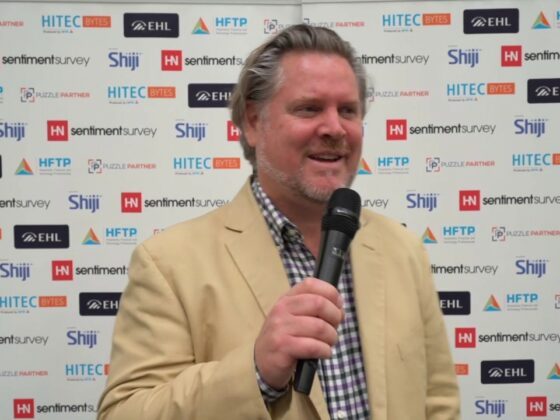CdA: Performance cannot be achieved without the financial means to support it. The €150 million annual partnership signed by LVMH with Formula 1 represents significant resources to make it happen. TAG Heuer has thus become the most heavily invested brand within LVMH’s watchmaking division. How do you perceive this pressure?
AP: The Group is a wise investor, investing where it believes there is potential. This is a significant responsibility, and I’m fully aware of it. However, this is not a new challenge. Major investments in R&D and advanced tooling have already been made in recent years, amounting to millions of Swiss francs. Our task is to capitalize on these resources effectively. The funds will be allocated across communication, product development, and enhancing the customer experience throughout our distribution network.
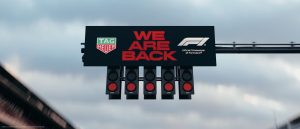
CdA: Will you be moving the brand further upmarket?
AP: Yes, but in a measured way. We’re not aiming to enter overcrowded segments dominated by other brands. However, there is a clear demand from our customers for premium, high-quality products. This includes features like a five-year warranty, a decade without servicing, and adherence to the highest environmental standards. Transparency is also critical, requiring stricter oversight of our supply chain. While we remain accessible, targeting the CHF 4,000–8,000 range, products reflecting our R&D and innovation will naturally command higher prices, as seen with our CHF 40,000 tourbillons.
CdA: What about TAG Heuer’s past strategy of offering high complications at prices below CHF 20,000?
AP: That approach doesn’t make sense. High-level craftsmanship, patent filing, material innovation, and pursuit of performance are inherently costly. However, these innovations can later be adapted for more widely accessible products – a strategy I intend to pursue.
CdA: You are stepping into your new role as CEO at a time when the watchmaking industry is struggling, and some brands are putting their employees on furlough. How has TAG Heuer weathered the industry challenges since September?
AP: Our position is relatively healthy. While we’ve made adjustments, such as not replacing certain roles, the numbers have been minimal, and there have been no layoffs. Our focus is on making the business as flexible as possible. On the sales side, we avoid overloading retailers with excessive inventory, maintaining a balanced relationship with our partners.
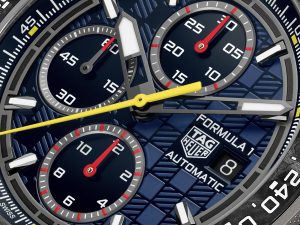
CdA: How will TAG Heuer activate its Formula 1 partnership?
AP: By reclaiming our rightful place in Formula 1. TAG Heuer was the first brand to sponsor F1 drivers in the 1960s, thanks to Jack Heuer’s innovative strategies. This heritage allows us to reaffirm our identity. I see Formula 1 as a media platform with unparalleled reach—1.5 billion viewers globally. TAG Heuer’s historical ties to motorsport are undeniable: 14 world champions have worn TAG Heuer watches. This emotional connection will be central to our campaigns and communication.
TAG Heuer will now have a dual presence as a global partner of Formula 1 and a sponsor of the Red Bull Racing team, mirroring our dual role in the 1980s as both a timekeeper and sponsor of McLaren. Staying in the competitive sphere is vital, as Formula 1’s appeal now extends to a glamorous, celebrity-filled audience. LVMH’s strength lies in its 360-degree activation strategy.
CdA: This represents significant budgets…
AP: Yes, but we’re also maintaining other partnerships, such as with Porsche in motorsport. Our commitment to motor racing is unparalleled. We embrace competition, even at the risk of failure, because failure often drives future success. This entrepreneurial mindset aligns perfectly with TAG Heuer’s values.
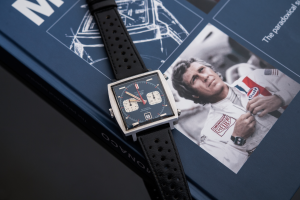
CdA: Is the pressure to succeed felt in proportion to the financial commitments?
AP: The risk itself is not necessarily greater; it is the consequences that are, along with the expectations of returns for the group. The stakes are higher, but their nature remains the same. The danger lies in fearing risk, as it blinds us to opportunities. It is essential to weigh both without being swept away by the euphoria of ambition or paralyzed by the panic of fear, while factoring in the current economic circumstances. The LVMH group has always been adept at seizing opportunities in times of change. Today, the economic environment is one of transformation.
CdA: Finally, how do you perceive TAG Heuer’s role in the watch industry?
AP: TAG Heuer is a significant player in the industry, and we have a duty to contribute to its growth. Within LVMH, we also play a role in protecting the broader interests of Swiss watchmaking.
About the author
Cristina d’Agostino founded the leading digital media Luxury Tribune in 2020. She is a journalist specialized in the luxury industry and regularly moderates conferences and debates on major trends in the sector. Previously, she was deputy editor-in-chief of the Swiss business magazine Bilan and for seven years headed the luxury special issues. From 1994 to 2008, she held various management positions in communications and marketing for watch brands.
Watch out for the next Insider, in early May, were we’ll be continuing our collaboration with Cristina d’Agostino and Luxury Tribune.
